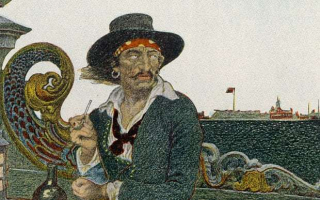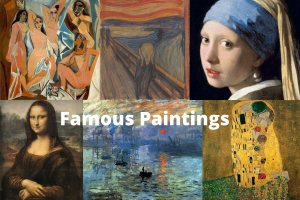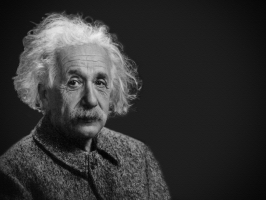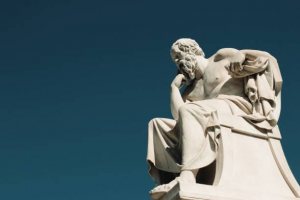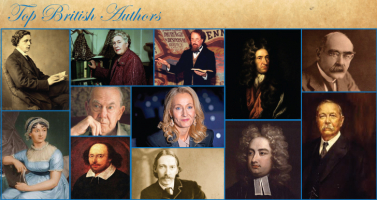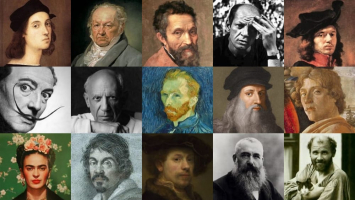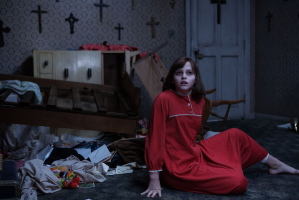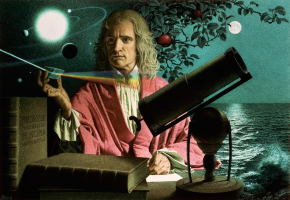Top 10 Most Famous Ballets Of All Time
Discover the most famous ballets of all time with Toplist through the following article. Ballet is the pinnacle of elegance and beauty, expressing a wide ... read more...spectrum of emotions via light, elegant, yet very technical movements. Because of their distinct storytelling structures, both classical and modern ballets have enduring popularity.
-
The Nutcracker, Op. 71, is a two-act "fairy ballet" written by Pyotr Ilyich Tchaikovsky in 1892, set on Christmas Eve in a child's imagination at the foot of a Christmas tree. The scenario is based on E. T. A. Hoffmann's short story The Nutcracker and the Mouse King, published in 1816. Marius Petipa, with whom Tchaikovsky had collaborated three years previously on The Sleeping Beauty, accompanied by Lev Ivanov, was the ballet's first choreographer. Although the full and produced The Nutcracker ballet was not as successful as Tchaikovsky's 20-minute Nutcracker Suite, which premiered nine months earlier, The Nutcracker quickly became popular.
It has been performed by various ballet companies, particularly in North America, since the late 1960s. The Nutcracker accounts for over 40% of major American ballet companies' annual ticket sales. Several film adaptations of Hoffmann's story have used the ballet's score. Tchaikovsky's score has become one of his most well-known works. The score is notable for its use of the celesta, an instrument that the composer had previously used in his far lesser known symphonic ballad The Voyevoda.
While the original ballet was not judged a unified performance, the score was deemed the best of Tchaikovsky's ballets by the Petersburg Gazette. The Nutcracker became one of the most famous ballets in the classical canon as a result of its several incarnations over the course of the twentieth century. Indeed, The Nutcracker continues to provide vital ticket sales and performance experience for ballet companies and schools across the United States.
Royal Opera House Royal Opera House -
Although composer Pyotr Ilyich Tchaikovsky's magnum opus was not critically lauded when it premiered in Moscow, Russia, Swan Lake remains a foundational piece of classical ballet today as well as one of the most famous ballets of all time. Despite its initial failure, it has since become one of the world's most popular ballets. Swan Lake, a mash-up of Russian and German fairy tales, portrays the story of Odette, a princess cursed and turned into a swan. The original choreographer was Julius Reisinger, but many contemporary ballet companies base their stagings on Marius Petipa and Lev Ivanov's 1895 revival in St. Petersburg.
The narrative of Odette, a princess turned into a swan by an evil sorcerer's spell, is told in two acts and was inspired by Russian and German folk legends. Julius Reisinger (Václav Reisinger) choreographed the original show. The Bolshoi Ballet presented the ballet on March 4, 1877 at the Bolshoi Theatre in Moscow.
Despite the fact that Swan Lake is given in numerous variations, most ballet companies base their stagings, both choreographically and musically, on the 1895 revival of Marius Petipa and Lev Ivanov, which was first staged for the Imperial Ballet on 15 January 1895, at the Mariinsky Theatre in St. Petersburg. Riccardo Drigo, principal conductor and composer of the St. Petersburg Imperial Theatre, rewrote Tchaikovsky's composition for this revival.
Royal Opera House Royal Opera House -
Sergei Prokofiev's ballet Romeo and Juliet, Op. 64, is based on William Shakespeare's play Romeo and Juliet. It was written in 1935 and heavily altered for its Soviet premiere in early 1940. Prokofiev adapted the ballet into three orchestral suites and a solo piano set. Although the dance mostly follows Shakespeare's original storyline, Prokofiev modified the tragic ending into a brighter ending for the two lovebirds in the first version of the ballet. Instead of both Romeo and Juliet committing suicide, Prokofiev's version has Juliette resurrecting in Romeo's arms so that the happy couple can dance happily ever after.
Giulietta e Romeo, the first ballet based on Shakespeare's story, was presented in 1785, with music by Luigi Marescalchi. The five-act ballet was choreographed by Eusebio Luzzi at Venice's Théâtre Samuele. Many people believe that Prokofiev's Romeo and Juliet ballet score is the best ever written. The most well-known rendition was initially performed in 1940 at the Kirov Theater in Leningrad, choreographed by Leonid Lavrovsky. Since its premiere, the play has been revived multiple times.
Royal Opera House Royal Opera House -
La Sylphide is a two-act romantic ballet. The ballet was created in two versions, the first by Filippo Taglioni in 1832 and the second by August Bournonville in 1836. Bournonville is the only known surviving version, and it is one of the world's oldest surviving ballets as well as one of the most famous ballets of all time. The tragic love story of a sylph (an air spirit) and a Scotsman is told in this dance.
Sylph is a mythical being or spirit. The ballet depicts an unattainable love between a human and a spirit, as well as man's intrinsic desire for an unknown and sometimes deadly life. La Sylphide is still a thrilling, fascinating ballet that both audiences and dancers enjoy. Because of the inclusion of the sylph and the witch, it differs from the conventional romantic ballet.
The earliest version of this dance was created by choreographer Filippo Taglioni and his daughter, Romantic ballerina Marie Taglioni. Their choreography has been lost to time, but the second version, choreographed by August Bournonville, is still performed on occasion. La Sylphide is regarded as one of the first of the Romantic period. His ballet, originally presented in Copenhagen in 1836, set the foundation of the Romantic ballet genre. It established a significant precedent in the world of ballet.
Tomaž Golub youdancefunny -
Coppélia is an 1870 comedic ballet choreographed by Arthur Saint-Léon to music by Léo Delibes and lyrics by Charles-Louis-Étienne Nuitter. Nuitter's text and stage direction were inspired by E. T. A. Hoffmann's short story Der Sandmann (The Sandman). The Greek word κoπέλα denotes "young woman." Coppélia premiered on May 25, 1870, at the Théâtre Impérial de l'Opéra, with 16-year-old Giuseppina Bozzacchi as Swanhilda and ballerina Eugénie Fiocre as Frantz en travesti. Paul Lormier and Alfred Albert designed the costumes, and Charles-Antoine Cambon (Act I, scene 1; Act II, scene 1) and Édouard Desplechin and Jean-Baptiste Lavastre (Act I, scene 2) designed the scenery.
This comedy of errors is choreographed by Arthur Saint-Léon and features a doll come to life and a young man, Franz, who has fallen for her. Its emphasis on love and enchantment reflects the Romantic ballet period's storytelling ideals.
Modern revivals are usually based on revivals staged by Marius Petipa for the Imperial Ballet of St. Petersburg in the late nineteenth century. At the turn of the twentieth century, Petipa's choreography was documented in the Stepanov technique of choreographic notation. These notations were eventually utilized to produce the St. Petersburg version for organizations such as the Vic-Wells Ballet.
Royal Opera House Royal Opera House -
Cinderella, Op. 87, is a ballet written by Sergei Prokofiev and set to a story by Nikolai Volkov. It is one of his most popular and melodious works, and it has influenced numerous choreographers since its debut. It is also considered as one of the most famous ballets of all time. The work was written between 1940 and 1944. This beloved ballet has inspired dancers and choreographers to replicate it since its debut performance. Prokofiev took a break from writing it to work on his opera War and Peace. Cinderella premiered at the Bolshoi Theatre on November 21, 1945, under the direction of Yuri Fayer, with choreography by Rostislav Zakharov and Galina Ulanova in the title role.
On November 21, 1945, Cinderella premiered at the Bolshoi Theatre in Moscow. Rostislav Zakharov choreographed the piece, which included ballerina Galina Ulanova in the principal role. This version is popular because the stepsisters are portrayed in a humorous manner. Cinderella is famous for its joyous music, gorgeous scenery, and the humorous double-roles of the stepmother and the two stepsisters, who in this interpretation are more mad than bad.
Royal Opera House Opéra national de Paris -
Don Quixote is a three-act ballet based on scenes from Miguel de Cervantes' classic work Don Quixote de la Mancha. It was choreographed by Marius Petipa to Ludwig Minkus' music and first performed by Moscow's Bolshoi Ballet on December 26, 1869. Petipa and Minkus reworked the ballet into a more intricate and extended version in five acts and eleven scenes for the Mariinsky Ballet, which premiered on November 21, 1871 at St. Petersburg's Imperial Bolshoi Kamenny Theatre.
The epic tale follows Don Quixote, a fanciful self-appointed knight, and his companion Sancho Panza, Quixote's more grounded counterpart. The ballet concludes with one of the most renowned pas de deux (duets) in the canon, a dance between the characters Kitri and Basilio.
Don Quixote was first performed outside of Russia by Anna Pavlova's company in 1924, in a truncated version of Gorsky's 1902 staging, though the full-length work was not performed for many years. Today, many companies all around the world have produced the ballet in various variations, and it is regarded as one of the great ballet masterpieces.
Royal Opera House Royal Opera House -
La Bayadère is a ballet that was initially created in four acts and seven tableaus by French choreographer Marius Petipa to music by Ludwig Minkus and a libretto by Sergei Khudekov. The ballet was performed as a reward for Russian Prima ballerina Ekaterina Vazem, who created the major character of Nikiya. In 1877, the Imperial Ballet premiered La Bayadère at the Imperial Bolshoi Kamenny Theatre in St. Petersburg, Russia.
The ballet was lauded by contemporary critics and audiences as one of choreographer Petipa's masterpieces from the first performance, notably the sequence in act II The Kingdom of the Shades, which is one of the most celebrated pieces in all of classical ballet. La Bayadère is a narrative of eternal love, mystery, fate, retribution, and justice set in the past of Royal India. The ballet tells the story of Nikiya, a temple dancer (bayadère) who is in love with Solor, a royal warrior. She is loved by the High Brahmin as well, but she doesn't love him back as she does Solor.
Although La Bayadère was regarded as a classic in Russia, it was hardly unknown in the West. Eugenia Feodorova staged the first western performance of the piece The Kingdom of the Shades at Rio de Janeiro's Teatro Municipal. The Kirov dance's presentation of The Kingdom of the Shades at the Palais Garnier in Paris on July 4, 1961, however, sparked widespread interest in this almost forgotten dance from the Imperial/Petipa repertory. The premiere was a great success, and it is regarded as one of the most pivotal moments in ballet history. La Bayadère is considered as one of the most famous ballets of all time as well.
Classical Ballet and Opera House Royal Opera House -
Giselle, commonly known as The Wilis or Giselle, ou Les Wilis in French, is a two-act ballet. Jules-Henri Vernoy de Saint-Georges and Théophile Gautier wrote it. Inspired by Heinrich Heine's article on the Wilis and Victor Hugo's poem "Fantômes" in Les Orientales about a girl who died after an all-night party. On Monday, June 28, 1842, the first Giselle was presented at the Ballet du Théâtre de l'Académie Royale de Musique in Salle Le Peletier in Paris, France.
Giselle depicts the narrative of a peasant girl named Duke Albrecht of Silesia, who falls in love with a bashful commoner named Giselle. Duke Albrecht's arranged marriage to the Duke of Courtland's daughter is the story's tension. He tries to avoid detection by wooing Giselle while disguised during a grape harvest festival.
The initial performance wowed both critics and audiences. Giselle became a worldwide sensation in Europe, Russia, and America. The lead part was performed by Carlotta Grisi, an Italian prima ballerina, at the Salle Le Peletier in Paris in June 1842. It was a smash upon its initial release and quickly became famous throughout Europe, contributing to its global appeal. Marius Petipa choreographed the variation most commonly seen now just before the twentieth century.
Opus Arte Royal Opera House -
The Sleeping Beauty is a ballet in three acts with a prologue and music by Pyotr Ilyich Tchaikovsky, Opus 66, finished in 1889. This iconic classical dance, created by Marius Petipa, was first performed in January 1890. It is the second of his three ballets and his second-longest piece in any genre, clocking in at 160 minutes. Ivan Vsevolozhsky created the initial story based on Perrault's La Belle au bois dormant, or The Beauty Sleeping in the Forest; Marius Petipa was the first choreographer.
It tells the narrative of Princess Aurora, who was abducted by fairies to shield her from the fury of the seventh fairy, who was not invited to Aurora's birth celebration. In a jealous passion, the seventh fairy cursed the child, dooming her to stab her finger on a spindle and die. Fortunately, one of the fairies had not yet given her gift, so the curse was lessened. Instead, Aurora will slumber for a century and will only be roused by the kiss of a lovely prince.
The Sleeping Beauty fairy tale is a timeless masterpiece that has been passed down through generations. It is definitely one of the most famous ballets of all time. The Sleeping Beauty was the most often performed ballet in the former Imperial Mariinsky repertoire after the 1917 Revolution. As the first collaboration between the legendary Russian composer Tchaikovsky and Russian choreographer Petipa, this ballet is significant in ballet history.
Royal Opera House Royal Opera House












